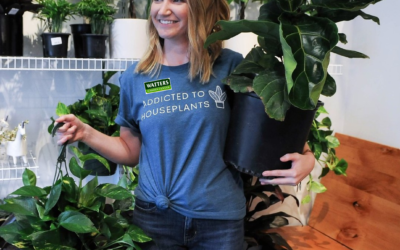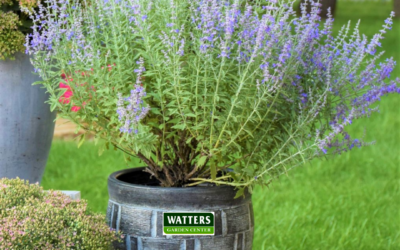Garden Gal
Learn more about local gardening; brought to you by Watters Garden CenterHelicopter Plant Parents
There are no silly questions when it comes to gardening. We are on this journey together; some have more experience than the rookies just starting out. That’s why two decades of garden articles, radio programs, and podcasts exist. Gardening is learned by making mistakes. I want to ensure you make mistakes in the right direction, never going backward.
Let’s start with the obvious. If something is alive in your home, it will need water. Houseplants most likely need a deep soak every 10 to 14 days. Succulents, cacti, and plants in dark rooms need water less often, probably every 2 to 3 weeks. Dogs and cats should not eat your houseplants; it’s not good for them.
Over and over again, I see these common mistakes. Eliminate even one, and you become a better plant parent and gardener.
Green Thrills
he easiest gardening is in containers. Tall plants turn ordinary container gardens into living art, adding height, variety, and drama. My designer rule for stylish containers is “thriller, spiller, then fillers.”
Combine a tall, “thrilling” focal point with plants spilling over the sides of your container to soften the edges. Filler plants bridge the space between. Very little potting soil should be visible when your design is complete. Plants will be touching foliage-to-foliage.
Start with a tall “thrilling” plant, and the rest of your job is easy. Here is my go-to list of tall plants that thrive in container gardens.
Harvest Herbs and Double their Garden Growth
Flavorful herbs are some of the easiest garden plants to grow, but you want to pay attention to your herb garden. Once in the ground, herbs are quickly ready for harvesting, unlike most other vegetables, which need time to ripen and mature.
The key to keeping herbs growing is to harvest often, even if you don’t need more. Herbal leaves are popular in cooking. Cutting them back throughout the growing season encourages healthy new growth and an attractive shape and keeps them producing.



